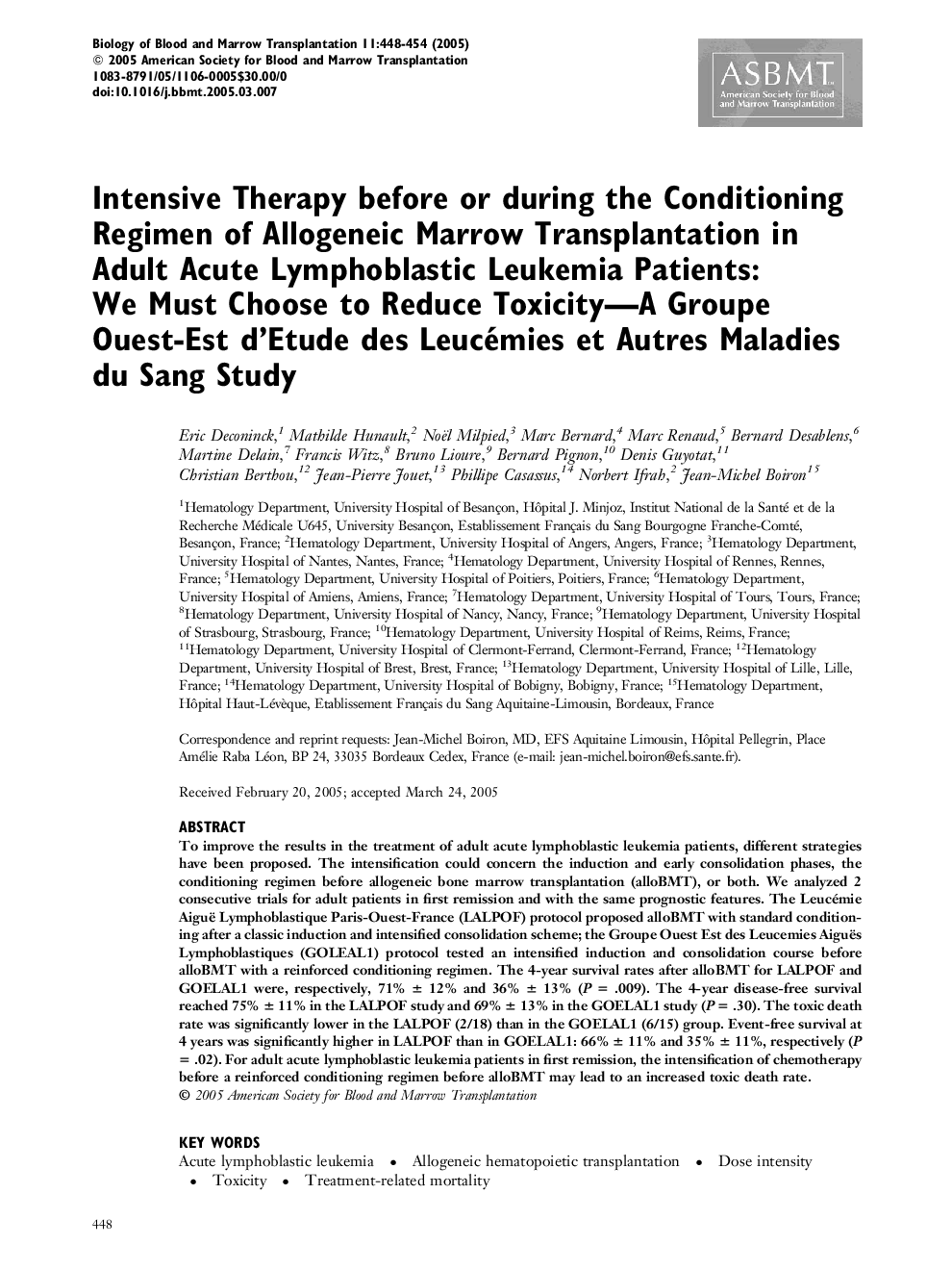| Article ID | Journal | Published Year | Pages | File Type |
|---|---|---|---|---|
| 9904210 | Biology of Blood and Marrow Transplantation | 2005 | 7 Pages |
Abstract
To improve the results in the treatment of adult acute lymphoblastic leukemia patients, different strategies have been proposed. The intensification could concern the induction and early consolidation phases, the conditioning regimen before allogeneic bone marrow transplantation (alloBMT), or both. We analyzed 2 consecutive trials for adult patients in first remission and with the same prognostic features. The Leucémie Aiguë Lymphoblastique Paris-Ouest-France (LALPOF) protocol proposed alloBMT with standard conditioning after a classic induction and intensified consolidation scheme; the Groupe Ouest Est des Leucemies Aiguës Lymphoblastiques (GOLEAL1) protocol tested an intensified induction and consolidation course before alloBMT with a reinforced conditioning regimen. The 4-year survival rates after alloBMT for LALPOF and GOELAL1 were, respectively, 71% ± 12% and 36% ± 13% (P = .009). The 4-year disease-free survival reached 75% ± 11% in the LALPOF study and 69% ± 13% in the GOELAL1 study (P = .30). The toxic death rate was significantly lower in the LALPOF (2/18) than in the GOELAL1 (6/15) group. Event-free survival at 4 years was significantly higher in LALPOF than in GOELAL1: 66% ± 11% and 35% ± 11%, respectively (P = .02). For adult acute lymphoblastic leukemia patients in first remission, the intensification of chemotherapy before a reinforced conditioning regimen before alloBMT may lead to an increased toxic death rate.
Keywords
Related Topics
Life Sciences
Biochemistry, Genetics and Molecular Biology
Cancer Research
Authors
Eric Deconinck, Mathilde Hunault, Noël Milpied, Marc Bernard, Marc Renaud, Bernard Desablens, Martine Delain, Francis Witz, Bruno Lioure, Bernard Pignon, Denis Guyotat, Christian Berthou, Jean-Pierre Jouet, Phillipe Casassus, Norbert Ifrah,
